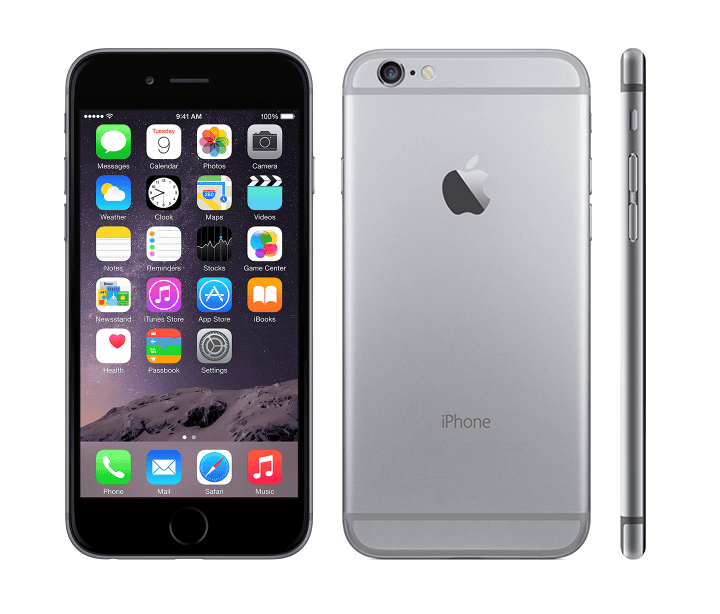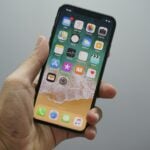The iPhone 6 marked a significant leap in Apple’s smartphone design when it launched in 2014. With its larger 4.7-inch display and sleek rounded edges, it ushered in a new era for the iconic device. The iPhone 6 packs an Apple A8 chip, 1GB of RAM, and storage options up to 128GB, delivering solid performance for its time.
This model introduced several key features that set it apart from its predecessors. The improved 8-megapixel iSight camera with Focus Pixels technology enhanced photo quality, while the addition of NFC enabled Apple Pay for contactless payments. The device also boasted better battery life compared to earlier iPhones.
Though no longer the latest offering from Apple, the iPhone 6 remains a capable smartphone for basic tasks. Its technical specifications still hold up for everyday use, making it a budget-friendly option for those who don’t need cutting-edge features.
| Feature | Specification |
|---|---|
| Display | 4.7-inch Retina HD |
| Processor | Apple A8 chip |
| RAM | 1GB |
| Storage | Up to 128GB |
| Camera | 8MP rear, 1.2MP front |
| Battery | 1810 mAh |
iPhone 6: A Blast from the Past
Though no longer Apple’s flagship, the iPhone 6 holds a special place in iPhone history. Released in 2014, it marked a significant design shift with its larger display and curved edges. Let’s take a look back at the specifications and features that defined this iconic device.
Design and Display
The iPhone 6 introduced a new design language for Apple, moving away from the sharp edges of the iPhone 5s to a smoother, more rounded aesthetic. It featured an aluminum unibody construction and was notably thinner than previous models.
The iPhone 6 sported a 4.7-inch Retina HD display with a resolution of 1334×750 pixels. This was a considerable jump from the 4-inch display of the iPhone 5s, offering more screen real estate for apps, videos, and browsing.
Camera
The iPhone 6 featured an 8-megapixel iSight camera with an f/2.2 aperture and autofocus. It included features like Focus Pixels for faster autofocus, digital image stabilization, and burst mode. While not as advanced as modern iPhone cameras, it was capable of capturing decent photos and videos for its time.
Performance
The iPhone 6 was powered by the A8 chip, a 64-bit processor that offered improved performance and efficiency compared to its predecessor. It also included the M8 motion coprocessor, which handled sensor data for fitness tracking and other motion-related activities.
Other Key Features
- Touch ID: The iPhone 6 included a fingerprint sensor built into the Home button for secure authentication and Apple Pay support.
- Connectivity: It supported faster Wi-Fi (802.11ac) and LTE connectivity.
- iOS 8: The iPhone 6 launched with iOS 8, which introduced features like Apple Pay, HealthKit, and Family Sharing.
Specifications Table
| Feature | Specification |
|---|---|
| Dimensions | 138.1 x 67 x 6.9 mm |
| Weight | 129 grams |
| Display | 4.7-inch Retina HD (1334 x 750) |
| Processor | Apple A8 chip |
| RAM | 1GB |
| Storage | 16GB, 64GB, 128GB |
| Rear Camera | 8MP, f/2.2 |
| Front Camera | 1.2MP, f/2.2 |
| Battery | Up to 14 hours talk time |
| Operating System | iOS 8 (original) |
| Colors | Space Gray, Silver, Gold |
The iPhone 6’s Legacy
The iPhone 6 was a pivotal release for Apple, setting the stage for future iPhone designs and features. Its larger display, improved camera, and powerful processor made it a popular choice among consumers. Even though it’s been surpassed by newer models, the iPhone 6 remains a significant milestone in iPhone history.
Design and Build
The iPhone 6 marked a significant shift in Apple’s design philosophy. It introduced a larger display while maintaining a slim profile. The device combined sleek aesthetics with practical features.
Materials and Dimensions
The iPhone 6 showcased a unibody aluminum design. Its frame measured 138.1 x 67 x 6.9 mm, making it exceptionally thin. The device weighed just 129 g, striking a balance between lightness and durability.
Apple used a sturdy glass front panel to protect the screen. This glass curved slightly at the edges, blending seamlessly with the aluminum body. The back featured antenna bands to improve signal reception.
The power button moved to the right side for easier access on the larger frame. Volume buttons and the mute switch remained on the left side.
Color Options
Apple offered the iPhone 6 in three distinct colors:
Each color option featured a matching aluminum back and white or black front panel. Space Gray paired with a black front, while Silver and Gold had white fronts.
The color choices allowed users to pick a style that suited their preferences. These finishes resisted scratches and maintained their appearance over time.
| Color | Front Panel | Back and Sides |
|---|---|---|
| Space Gray | Black | Dark Gray |
| Silver | White | Light Silver |
| Gold | White | Champagne Gold |
Hardware
The iPhone 6 packs powerful components into its slim frame. Its advanced processor, range of storage options, and long-lasting battery make it a capable device for everyday use.
Processor and Performance
The iPhone 6 features the Apple A8 chip, a 64-bit system-on-chip that delivers impressive performance. This dual-core processor runs at 1.4 GHz, providing smooth multitasking and responsive app launches. The A8 chip offers up to 25% faster CPU performance and 50% faster graphics compared to its predecessor.
Paired with the processor is 1 GB of LPDDR3 RAM. This combination allows you to switch between apps quickly and handle demanding tasks with ease. The iPhone 6’s performance is further enhanced by its Metal graphics technology, which maximizes the potential of the A8 chip for gaming and graphics-intensive applications.
Memory and Storage Options
You can choose from several storage capacities for your iPhone 6:
- 16 GB
- 64 GB
- 128 GB
These options let you pick the right amount of space for your needs. The 16 GB model suits basic users, while 64 GB and 128 GB versions cater to those who need more room for apps, photos, and videos.
It’s important to note that the iPhone 6 doesn’t support expandable storage via microSD cards. Choose your storage wisely, as you can’t upgrade it later.
Battery Specifications
The iPhone 6 comes with a 1810 mAh battery, providing solid battery life for daily use. Here’s what you can expect:
| Activity | Duration |
|---|---|
| Talk time (3G) | Up to 14 hours |
| Internet use | Up to 10 hours (3G/LTE), 11 hours (Wi-Fi) |
| Video playback | Up to 11 hours |
| Audio playback | Up to 50 hours |
| Standby time | Up to 250 hours |
The battery is not user-replaceable, but it supports fast charging. You can charge up to 50% in about 30 minutes with an 18W adapter or higher.
The iPhone 6’s power efficiency is partly due to its A8 chip, which helps manage energy consumption effectively. This balance of performance and efficiency makes the iPhone 6 a reliable companion for your daily tasks.
Display and Audio
The iPhone 6 boasts impressive display and audio features. Its screen offers crisp visuals while the audio system delivers clear sound for calls and media playback.
Screen Quality
The iPhone 6 features a 4.7-inch Retina HD Display with vibrant colors and sharp details. Its 1334-by-750-pixel resolution provides 326 pixels per inch, ensuring text and images appear smooth and clear.
The screen uses IPS technology for wide viewing angles. This means you can see the display clearly from various positions. The display also has a 1400:1 contrast ratio, making blacks deeper and whites brighter.
Apple added a fingerprint-resistant coating to reduce smudges. This keeps your screen looking clean throughout daily use.
| Display Feature | Specification |
|---|---|
| Size | 4.7 inches |
| Resolution | 1334 x 750 pixels |
| Pixel Density | 326 ppi |
| Technology | IPS LCD |
| Contrast Ratio | 1400:1 |
Sound Systems
The iPhone 6’s audio system includes a built-in loudspeaker and a 3.5mm headphone jack. The loudspeaker is suitable for hands-free calls and casual music listening.
For private listening, you can use the included Apple EarPods. These earphones plug into the 3.5mm jack and offer improved sound quality over older models.
The device supports various audio formats. This allows you to enjoy a wide range of digital music files and streaming services.
Audio quality during calls is clear thanks to noise-cancellation technology. This feature helps reduce background noise when you’re speaking in noisy environments.
Connectivity and Sensors
The iPhone 6 offers a range of connectivity options and sensors to enhance user experience. These features enable wireless communication, network access, and intuitive device interactions.
Wireless and Network Capabilities
The iPhone 6 supports various wireless technologies for seamless connectivity. It features LTE Advanced for faster cellular data speeds. You can connect to 3G and 4G networks, including GSM, CDMA, HSPA, and UMTS standards. The device also supports multiple LTE bands for global compatibility.
Wi-Fi capabilities include 802.11a/b/g/n/ac standards, allowing for high-speed internet access. Bluetooth 4.0 enables wireless connections to accessories and other devices. The iPhone 6 introduces NFC (Near Field Communication) technology, primarily used for Apple Pay.
| Wireless Technology | Supported Standards |
|---|---|
| Cellular | LTE, 3G, 4G |
| Wi-Fi | 802.11a/b/g/n/ac |
| Bluetooth | 4.0 |
| NFC | Yes |
Physical Connectors and Sensors
The iPhone 6 uses a Lightning connector for charging and data transfer. This reversible port simplifies connections and supports various accessories. The device uses a Nano-SIM card for cellular connectivity.
Built-in sensors enhance the user experience. Touch ID, integrated into the home button, provides secure biometric authentication. The device includes an accelerometer, gyroscope, and proximity sensor for motion tracking and screen orientation.
Siri, Apple’s voice assistant, utilizes the device’s microphones for hands-free operation. Additional sensors include:
- Barometer
- Ambient light sensor
- Digital compass
These sensors enable features like fitness tracking, adaptive screen brightness, and location services.
Frequently Asked Questions
The iPhone 6 boasts several key features and specifications. Let’s explore some common queries about its physical attributes, camera capabilities, display, storage options, connectivity, and memory.
What are the dimensions and weight of the iPhone 6?
The iPhone 6 measures 138.1 x 67 x 6.9 mm. This slim profile makes it easy to hold and use with one hand.
It weighs 129 grams, striking a balance between portability and durability.
Can you provide details on the camera specifications of the iPhone 6?
The iPhone 6 features an 8-megapixel rear camera. This camera allows you to capture high-quality photos and videos.
The device also includes a front-facing camera for selfies and video calls.
What is the screen size and resolution of the iPhone 6 display?
The iPhone 6 sports a 4.7-inch diagonal LED-backlit widescreen Multi-Touch display. This size offers a good balance between usability and portability.
Its resolution is 1334 by 750 pixels at 326 ppi (pixels per inch). This Retina HD display ensures crisp, clear visuals.
What variations in storage capacity are available for the iPhone 6?
The iPhone 6 comes in different storage options to suit your needs. You can choose from 16GB, 64GB, or 128GB variants.
Remember, the iPhone 6 doesn’t support expandable storage via microSD cards.
What type of connectivity options does the iPhone 6 support?
The iPhone 6 supports various connectivity options. These include Wi-Fi, Bluetooth, and cellular data (3G and 4G LTE).
It also features NFC (Near Field Communication) for Apple Pay transactions.
How much RAM is included in the iPhone 6?
The iPhone 6 comes with 1GB of RAM. This amount of memory allows for smooth multitasking and app performance.
While it may seem low by today’s standards, it was sufficient for the device’s software and capabilities at the time of release.
| Feature | Specification |
|---|---|
| Display | 4.7-inch, 1334×750 pixels |
| Dimensions | 138.1 x 67 x 6.9 mm |
| Weight | 129 grams |
| Rear Camera | 8 megapixels |
| Storage Options | 16GB, 64GB, 128GB |
| RAM | 1GB |







